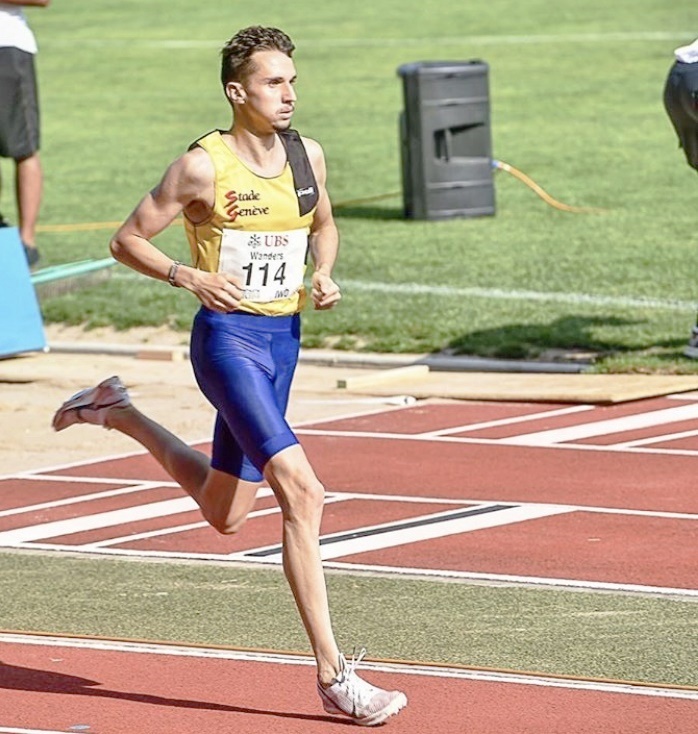Forefoot running is better for not just your shins, knees and lower back, but your hips as well!
This is because forefoot running reduces high loading and impact on the hip-joint by preventing an over-stride ~an over-stride means a much more extended leg at touchdown, causing the foot to land far ahead of the upper body (center of mass), producing distinctive impact forces that grow in proportion to your weight and speed during running. These forces include high brake loads, higher rates and magnitudes of the ground reaction force, greater peak shear stress and compressive loading which all weigh heavily on the hips.
It turns out that landing with a forefoot strike when you run actually forces you to take smaller steps, thus shortens your stride length and also automatically increases your step-rate (the number of steps you take per minute) all of which helps you nail down your initial foot strike position closer to your center of mass.


Over the last decade, several compelling studies have emerged to explain the pronounced effect of a higher step-rate on impact reduction, namely on the hips and knees, during running. For instance, a 2011 study in the journal of Medicine and Science in Sports and Exercise found that increased step-rate instantly decreased stride length which reduced hip extension moments at touchdown and reduced peak hip adduction during loading response shortly after touchdown during running. These stride parameters were found to be a big part in improving the upper body’s trajectory at touchdown which led to a significant reduction in loading and stress across the hips.
The researchers pointed out that reduced stride length during running enabled the upper body to pass through a smaller horizontal area relative to initial foot strike position, resulting in less compressive forces on the hips. What this means is that a shorter stride length via increased step-rate pushes the upper body in a more favourable direction closer to initial foot strike position. In this way, since initial foot strike position and the upper body are now closer together, overloads to the hip are prevented because less mechanical work is needed for the hips to pull the center of mass forward through a shorter horizontal area at each step. Even better, there’s an avoidance of a high collision force during running when initial foot strike position is closer to the center of mass, helping reduce stress on the hips.
The researchers also noted that the body was more spring-enabled and allowed more energy to be absorbed at the hip which helps raise energy efficiency because when the musculoskeletal system is more spring-enabled, less muscular effort is needed to accelerate the body forward during running.
Overall, these are the mechanical chain of events that accounts for reductions in repetitive overuse and abuse on the hips when you run with a forefoot strike as compared with heel strike running.
All in all, much of the evidence does not support that heel strike running sustains better on the hips than forefoot running. In fact, a wide array of research during the past few decades has shown that consistent consequences of heel strike running include excessive abnormal compressive loading on the knees, hips and lower back, increases in tensile bone stress on multiple sites on the shin and femur and excessive vertical impacts at heel strike, all of which leads to injury. This is why heel strike runners have higher rates of more severe injuries (i.e significant loss of knee cartilage; broken femur).
What accounts for much of the force in heel strike running? When you land heel-first during running, you typically overreach (over-stride) with your foot which creates a larger horizontal area between initial foot strike position and your upper body, therefore the upper body is farther behind initial foot strike position as compared with forefoot running. Here’s a video I did where I discuss more on why these mechanics are considered a major cause of hip injuries
References:
[1]. Heiderscheit BC, Chumanov ES, Michalski MP, Wille CM, Ryan MB. Effects of step rate manipulation on joint mechanics during running. Med Sci Sports Exerc. 2011;43:296-302.
[2]. Schubert et al. influence of stride frequency and length on running mechanics: a systematic review. Sports Health, 2014, 6(3):210-217.
If you’d like, you can support Run Forefoot and help keep it going by making a donation in any amount of your choosing:

Or, you can also support Run Forefoot by shopping at the following top minimalist shoes brands, and be sure to bookmark the links:
Be Lenka: https://www.dpbolvw.net/click-7600968-14330828
FeelGrounds: https://www.feelgrounds.com/?p=RunForefoot
Xero Shoes: https://xeroshoes.com/go/Run_Forefoot
Iguaneye: https://www.iguaneye.com/?ref=8tfXVc92
Soft Star Shoes: https://shrsl.com/3mp1b
Wilding Shoes: https://bit.ly/3lIygQP
Earth Runners: https://earthrunners.com/?rfsn=6763579.f7f9c9
Vivobarefoot: https://shrsl.com/3kvih
Zappos: https://goo.gl/J1CeAd

Bretta Riches
BSc Neurobiology; MSc Biomechanics candidate, ultra minimalist runner & founder of RunForefoot. I was a heel striker, always injured. I was inspired by the great Tirunesh Dibaba to try forefoot running. Now, I'm injury free. This is why I launched Run Forefoot, to advocate the health & performance benefits of forefoot running and to raise awareness on the dangers of heel striking, because the world needs to know.
Latest posts by Bretta Riches (see all)
- Can You Run In Barefoot Shoes? Yes, But DON’T Heel Strike! - 21/07/2024
- Why Cushioned Running Shoes Are Really Bad for Your Feet - 19/07/2024
- Do Cushioned Running Shoes Cause Injuries? - 17/07/2024
